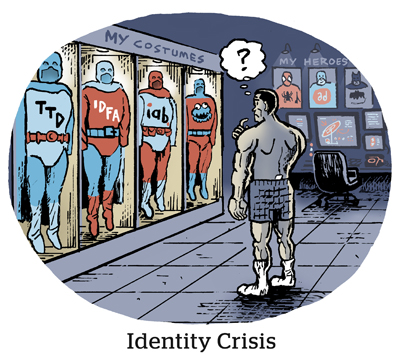
This is a living article that will be updated as new partners join.
The Unified ID 2.0 initiative reached a meaningful milestone in May 2021 when The Trade Desk turned over the full code base to the IAB Tech Lab.
Now that the project is formally open source, here’s a cheat sheet to keep you up to speed on progress, existing partners and new integrations.
UID 2.0 TL;DR
The 1.0 version of Unified ID was first developed by The Trade Desk in 2018 as a universal cookie ID. When Google announced its plan to get rid of third-party cookies in Chrome, The Trade Desk pivoted to develop a version that serves as a cookie replacement, using hashed and encrypted email addresses.
The design for Unified ID 2.0 was developed based on the IAB’s Project Rearc principles.
Partner roll call
Starting in October 2020, The Trade Desk began signing up partners to support UID 2.0. Collect them all.
- Location intelligence provider Adsquare will let marketers to activate its audience segments and measure campaign effectiveness related to UID 2.0 on any collaborating buying platform.
- B2B marketing data company NetWise will support UID 2.0 to help B2B marketers enrich their data without relying on PII.
- Cloud data service Snowflake will support UID 2.0 to enable direct data onboarding and matching opportunities for different first-party data sets.
- Omnicom Media Group signed on to integrate Unified ID 2.0 into its Omni data platform to sit alongside other cookie replacement solutions, such as LiveRamp’s Portrait Engine and Google’s Privacy Sandbox.
- AMC Networks says it will adopt the UID 2.0 technology to make it easier for buyers to access its digital ad inventory.
- Mobile data platform TrueData will allow customers to connect UID2 identifiers with mobile ad IDs, emails, household IPs and other digital identifiers.
- Tubi, Fox’s free AVOD service, is supporting UID 2.0 to help scale the identifier in the CTV environment.
- Customer data platform Amperity is allowing brands to retrieve and store UID 2.0 identifiers against their own first-party customer data.
- Audience data provider Alliant joined as an independent data co-op partner so that advertisers can transact on audiences tied to UID identifiers.
- GumGum has said it will support passing UID 2.0 identifiers in the bid stream.
- Sonobi integrated with UID 2.0 so that its clients can translate UID identifiers to other IDs and vice versa.
- Video SSP Beachfront is supporting Unified ID 2.0 within its convergent TV ad platform so that programmers and media buyers can transact through the UID 2.0 framework itself or through the integration with LiveRamp.
- Chinese tech company and app publisher Meitu is making UID 2.0 available in mobile-dominant Asia markets.
- Publicis Groupe-owned Epsilon is making its CORE ID identity platform interoperable with UID 2.0.
- Oracle’s integration with UID 2.0 will allow marketers to use the identifier for identity resolution.
- Yieldmo is allowing UIDs to pass through its marketplace from publishers to authorized buyers so that they can identify users in cookieless environments.
- Data onboarding company Throtle joined UID 2.0 to gain access to cookieless addressable inventory across channels and devices.
- Digital marketing platform and public company AcuityAds integrated with UID 2.0 and LiveRamp’s IdentityLink at the same time, because might as well be safe as opposed to sorry.
- Xandr is integrating with UID 2.0 so that buyers and sellers can access the ID via Xandr’s programmatic buying platform and its ad exchange.
- FuboTV is working with UID 2.0 partners to develop standards and solutions to support CTV advertising.
- The Washington Post will enable transactions on its site using UID 2.0 and make it available to Zeus Performance publishers.
- OpenX will support passing UID 2.0 in the bid stream.
- Nielsen is helping The Trade Desk to improve the measurement aspects of UID 2.0.
- Neustar will make UID 2.0 interoperable with its own Fabrick ID.
- Criteo is building the single-sign on UI for consent and privacy management that will serve as UID 2.0’s consumer-facing component.
- PubMatic will offer UID 2.0 as a default identifier.
- Magnite will use UID 2.0 to facilitate RTB transactions.
- LiveRamp is embedding UID 2.0 into its infrastructure so that SSPs and DSPs can bid on it.
- Index Exchange will enrich bids across channels for publishers that use the ID.
- Infutor is adding UID 2.0 identifiers to its identity graph.
- SpotX will use it to help media owners generate higher CPMs and take more control over their proprietary data.
- Mediavine integrated UID 2.0 into its audience engagement framework.
- Ad network Trade House Media now passes UIDs in the bidstream to enable buyers to bid against them across channels.
- And TripleLift told AdExchanger that it’s actively working to implement Unified ID 2.0 in order to support targeting and measurement use cases for clients and partners.
Laying the groundwork
The Trade Desk will continue to take on the responsibility of signing up partners to support UID 2.0 until certain key roles are filled, when the company says it will step back from any controlling interest in the initiative.
The UID 2.0 design calls for three main supporting functions: operators, auditors and an administrator.
Operators will be tasked with generating the UIDs themselves and hosting them on servers. Prebid was the first to volunteer.
In late July, IPG-owned Acxiom and Kinesso signed on to serve as the first two so-called “closed operators” for UID 2.0. Theoretically, this will enable them to keep first-party data in-house in a privacy-safe manner while still using UID2 identifiers to find audiences across the open web.
Auditors (there will be more than one of these as well), meanwhile, will have the job of making sure participants are in compliance and using UIDs appropriately.
And the administrator (there’s going to be only one) will be a centralized body in charge of governing the UID 2.0 ecosystem and handing out the encryption and decryption keys. The IAB Tech Lab will almost certainly be the administrator of UID 2.0, although that’s not official just yet.
Milestones along the way
Amid the drumbeat of partnership announcements, The Trade Desk has been working to get Unified ID 2.0 ready for prime time.
In January, The Trade Desk submitted the code for UID 2.0 for review in response to the Partnership for Responsible Addressable Media’s (PRAM) call for alternative technologies to replace cookies and other identifiers.
In February, Prebid raised its hand to serve as an operator of UID 2.0.
In March, Unified ID 2.0 entered beta and advertisers were able to start transacting on impressions using UID2 identifiers.
In April, Criteo started testing the single sign-on solution, called OpenPass, that will serve as the consumer-facing consent-gathering mechanism for Unified ID 2.0.
And, in May, The Trade Desk committed the entire open source code base for UID 2.0 to the PRAM Technical Working Group run by the IAB Tech Lab – a move that officially marks Unified ID 2.0’s passage from proposed industry initiative to fully open source technology.
In October, live beta testing kicked off in Canada.






 By
By 



